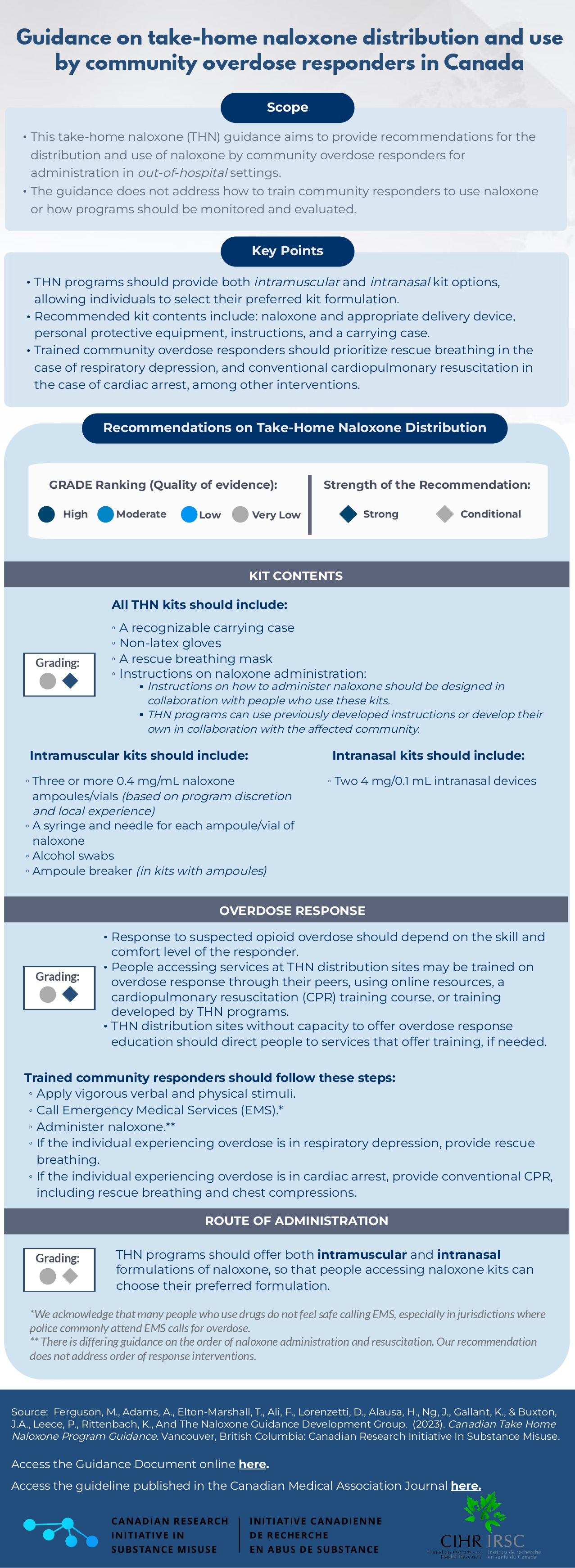Abstract: Opioid related overdoses and overdose deaths continue to constitute an urgent public health crisis. The implementation of naloxone programs, such as ‘take-home naloxone’ (THN), has emerged as a key intervention in reducing opioid overdose deaths. These programs aim to train individuals at risk of witnessing or experiencing an opioid overdose to recognize an opioid overdose and respond with naloxone. Naloxone effectively reverses opioid overdoses on a physiological level; however, there are outstanding questions on community THN program effectiveness (adverse events, dosing requirements, dose-response between routes of administration) and implementation (accessibility, availability, and affordability). The objective of this scoping review is to identify existing systematic reviews and best practice guidelines relevant to clinical and operational guidance on the distribution of THN.
Guidance on Take-Home Naloxone Distribution and Use by Community Overdose Responders in Canada
Naloxone Program Guidance: Executive Summary
